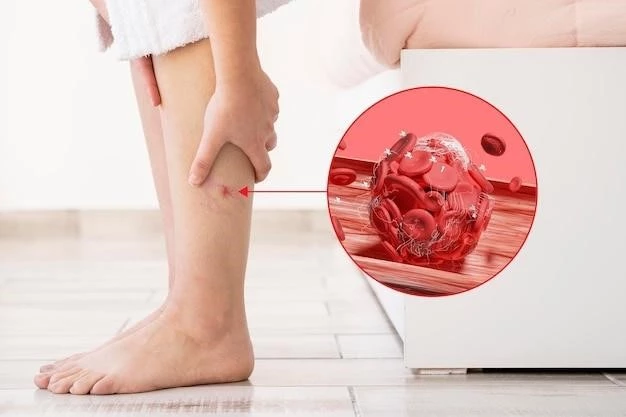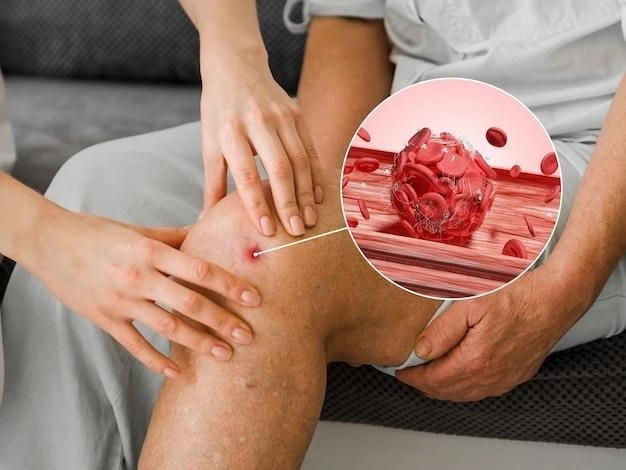Disease ⎼ Keratosis Pilaris
I. Introduction to Keratosis Pilaris
Keratosis pilaris, often referred to as ″chicken skin,″ is a common skin condition characterized by small bumps on the skin’s surface. These bumps are usually found on the arms, thighs, buttocks, and even the face. This genetic disorder results in the accumulation of dead skin cells around hair follicles, causing rough patches, redness, and sometimes dry skin.
Individuals with keratosis pilaris may experience symptoms such as rough, dry skin that feels like sandpaper. The condition often worsens in the winter months when the air is drier. While keratosis pilaris is harmless and generally asymptomatic, the appearance of the skin can be a concern for some individuals, leading to a desire for treatment.
Understanding the causes, symptoms, and common areas affected by keratosis pilaris is essential in managing this skin condition effectively. Despite not having a cure, various treatment options are available to help improve the appearance and texture of the skin affected by keratosis pilaris.
II. Understanding the Causes and Symptoms
Keratosis pilaris is primarily caused by an overproduction of keratin, a protein that protects the skin from infections and other harmful substances. In individuals with this genetic disorder, excess keratin accumulates around hair follicles, leading to the formation of small bumps that give the skin a rough, uneven texture.
Common symptoms of keratosis pilaris include the appearance of small, rough bumps on the skin, often accompanied by redness and dryness. These bumps are typically white, flesh-colored, or red and can feel like sandpaper when touched. Symptoms are most commonly seen on the arms, thighs, buttocks, and face.
Understanding the causes and symptoms of keratosis pilaris is crucial in diagnosing and managing this skin condition effectively. While the condition is not harmful, it can impact one’s self-esteem due to the visible changes in the skin’s texture and appearance. Seeking appropriate treatment options can help alleviate symptoms and improve the overall skin health of individuals affected by keratosis pilaris.
III. Common Affected Areas of the Body
Keratosis pilaris commonly affects various areas of the body, with the most frequently impacted areas being the arms, thighs, buttocks, and face. On the arms, the condition may manifest as small, rough bumps that resemble goosebumps or permanent gooseflesh. These bumps can be red, white, or flesh-colored, giving the skin a bumpy texture.
Individuals with keratosis pilaris may also experience symptoms on their thighs, where the skin can feel rough and appear reddish. The buttocks are another common site for this skin condition, with small bumps often present on the skin surface. Additionally, some individuals may notice symptoms on their face, particularly around the cheeks and jawline.
Recognizing the common affected areas of the body is essential in identifying and understanding keratosis pilaris. While these areas are more prone to developing the characteristic bumps associated with the condition, it is crucial to note that keratosis pilaris can occur on other body parts as well. Seeking guidance from a healthcare professional can help determine the best course of action for managing the symptoms based on the affected areas.
IV. Recognizing Symptoms and Diagnosis
Recognizing the symptoms of keratosis pilaris is crucial for an accurate diagnosis and appropriate management of this common skin condition. Symptoms typically include small, rough bumps on the skin surface that may be white, red, or flesh-colored. The affected areas often exhibit redness and dryness, giving the skin a bumpy texture.
Diagnosing keratosis pilaris is usually based on a physical examination of the skin by a healthcare provider. The distinctive appearance of the bumps, coupled with a patient’s medical history and symptoms, helps in confirming the presence of this genetic disorder. In some cases, a skin biopsy may be recommended to rule out other skin conditions.
It is essential to consult a dermatologist or healthcare professional if you suspect you have keratosis pilaris to receive an accurate diagnosis and appropriate treatment plan. While the condition is typically diagnosed based on its physical characteristics, medical professionals may also inquire about any family history of the disorder to better understand the individual’s risk factors and potential treatment options.
V. Treatment Options for Keratosis Pilaris
Various treatment options are available to manage the symptoms of keratosis pilaris and improve the appearance of affected skin. One common approach is regular exfoliation using gentle scrubs or loofahs to help remove dead skin cells and unclog hair follicles. This can help smoothen the skin’s texture and reduce the rough bumps associated with the condition.
Moisturizing the skin regularly with emollients or moisturizers can help alleviate dryness and reduce redness associated with keratosis pilaris. Choosing products that contain ingredients like lactic acid, urea, or salicylic acid can help promote skin cell turnover and prevent the accumulation of excess keratin around hair follicles.
In more severe cases, dermatologists may recommend topical retinoids or prescription-strength creams to help improve the skin’s texture and reduce inflammation. Laser therapy or chemical peels may also be options for individuals looking to address stubborn keratosis pilaris lesions.
It is essential to consult a healthcare professional before starting any treatment regimen to ensure that the chosen approach is suitable for your skin type and condition severity. While keratosis pilaris does not have a definitive cure, diligent skincare routines and targeted treatments can help manage symptoms effectively and improve the overall appearance of the skin over time.

VI. Conclusion
In conclusion, keratosis pilaris, a common genetic skin disorder, manifests as small bumps on the skin’s surface, often on the arms, thighs, buttocks, and face. This condition, characterized by rough patches, redness, and dry skin, results from the accumulation of dead skin cells around hair follicles.
Recognizing the symptoms of keratosis pilaris and understanding its common affected areas are key steps in managing this skin condition. While there is no definitive cure, various treatment options, including exfoliation, moisturization, topical creams, and professional interventions, can help improve skin texture and reduce the appearance of rough bumps.
Seeking guidance from a healthcare provider or dermatologist for an accurate diagnosis and tailored treatment plan is essential for individuals with keratosis pilaris. By incorporating suitable skincare practices and treatments, individuals can effectively manage the symptoms of this condition and enhance the overall health and appearance of their skin.
Overall, maintaining a consistent skincare routine and exploring appropriate treatment options can significantly impact the management of keratosis pilaris, providing relief from symptoms and improving the confidence and comfort of those affected by this common skin condition.
